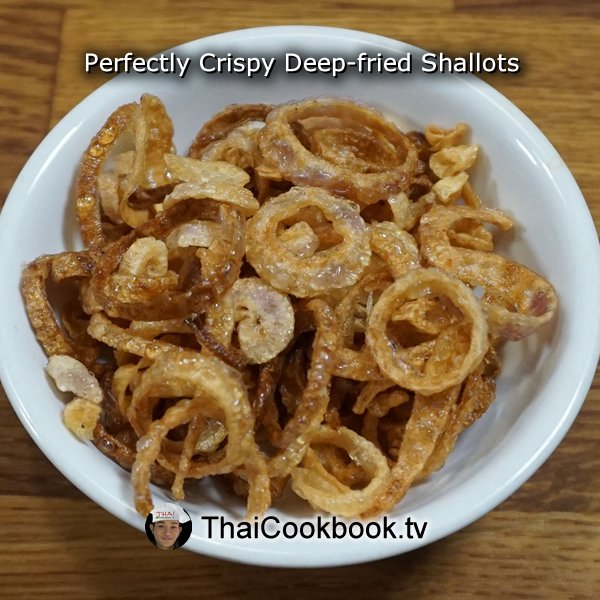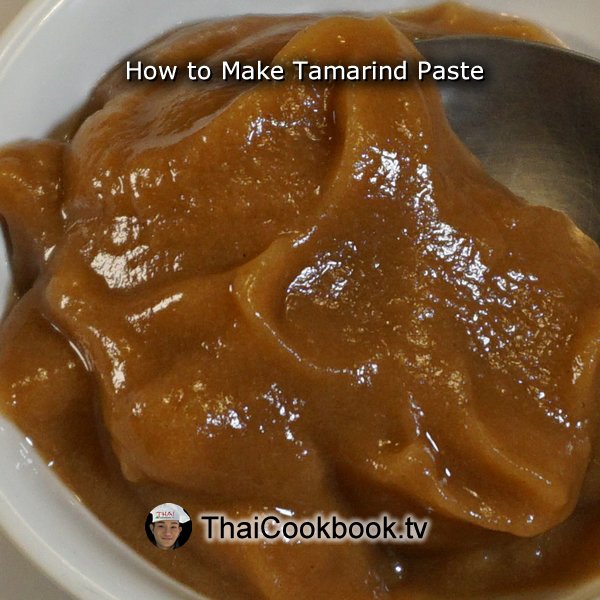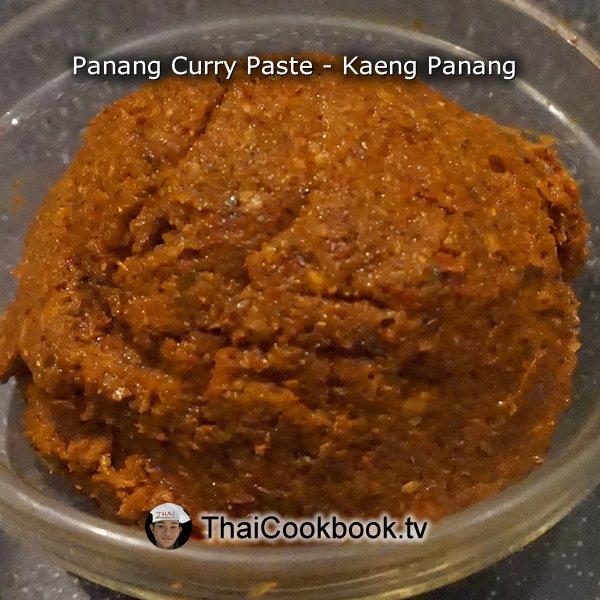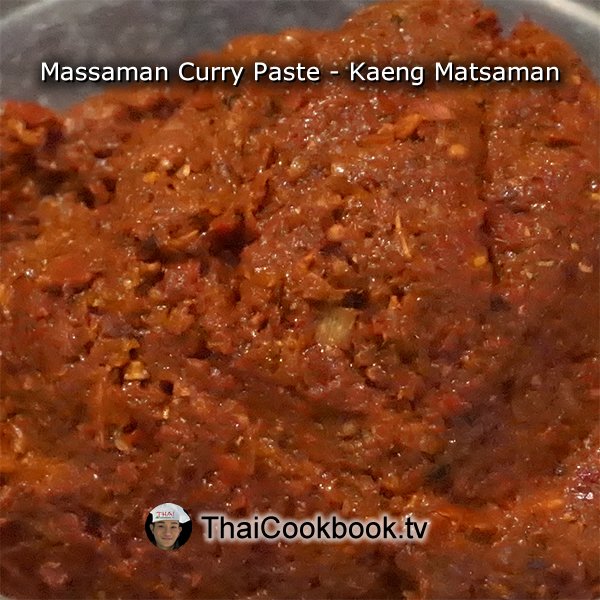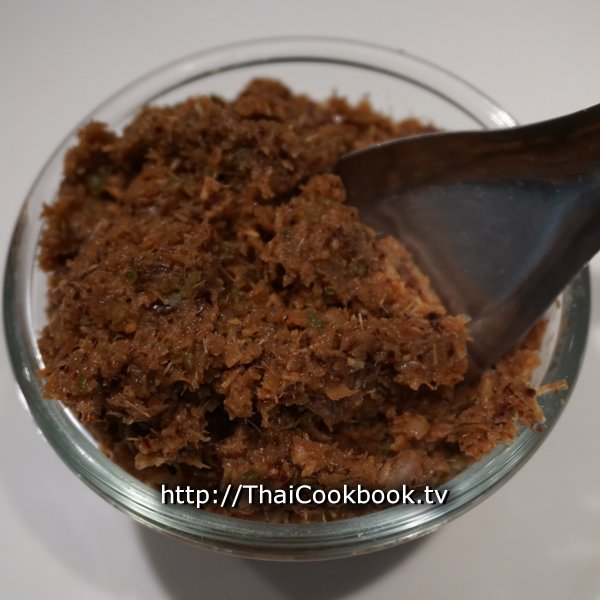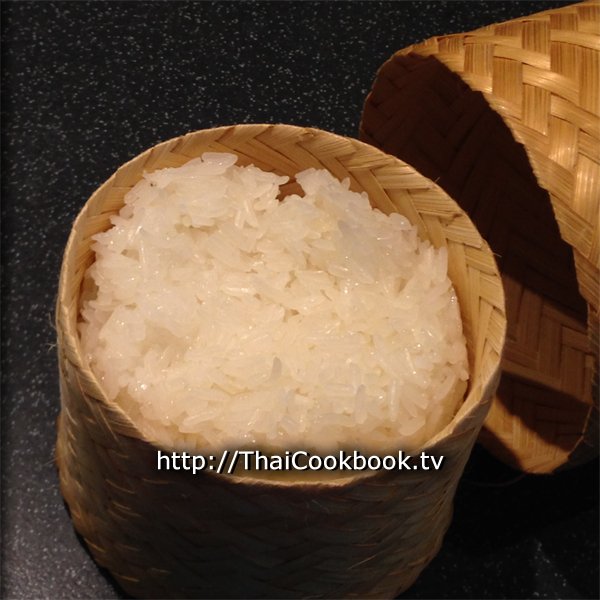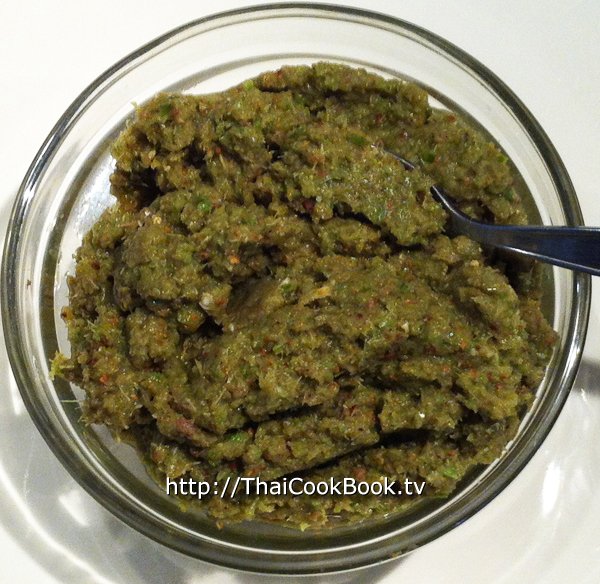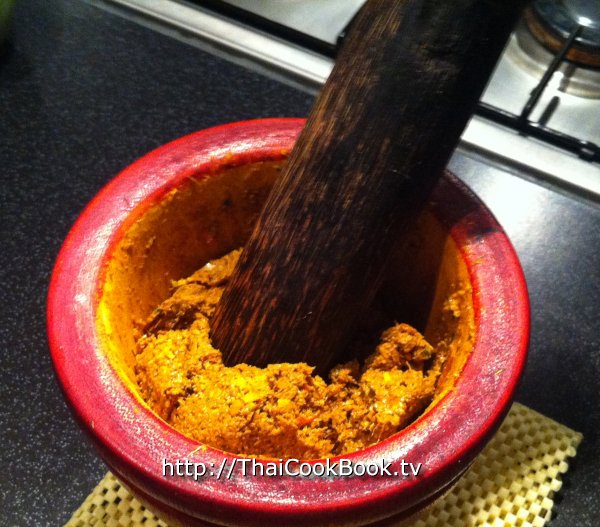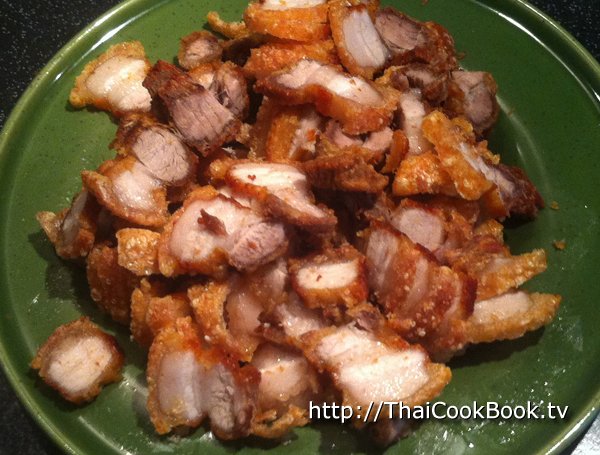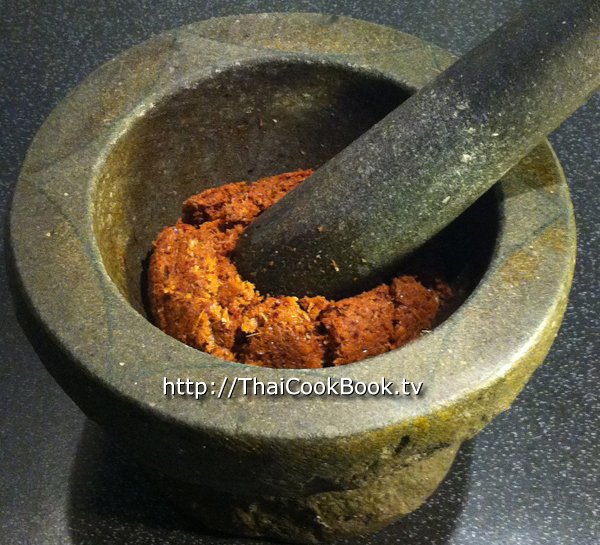Our List of Thai Recipe Components
Our List of Thai Recipe Components
Crispy Fried Shallots ►
(Hom Daeng Tod)
Making perfectly crispy and golden brown fried shallots can be a challenge. So many of our Thai recipes call for fast cooking or high heat, but to make your shallots come out just right you need to keep the heat low, and fry them for at least 5 minutes.
Tamarind Paste ►
(Makaam Piak)
Tamarind Paste (Makaam Piak) is a soft, thick, and creamy paste made by reconstituting dried tamarind fruit. Once fully dried, tamarind can be kept in a tightly sealed container in your kitchen pantry for a long, long time. If you do a lot of Thai cooking, we highly recommend that you take some home the next time you see it, and keep it on hand so you can make a little fresh paste as you need it.
Panang Curry Paste ►
(Kaeng Panang)
Prik Kaeng Panang is a lovely Thai curry paste that is used to make Panang Curry dishes. You'll know it from its golden orange color and the flavors of mace, cardamom, and toasted seeds. You can always buy a packaged curry, but if you are serious about Thai cooking there is no better way to really learn how to customize the flavor than by starting with all the raw ingredients.
Massaman Curry Paste ►
(Kaeng Massaman)
You can always buy a packaged curry, but there's nothing more satisfying in Thai cooking than making your own from all the raw ingredients. Kaeng Matsaman is a southern style curry that is rich with the flavors of cinnamon, nutmeg, cloves, cumin, and coriander seed.
Basic Red Curry Paste ►
()
The most common red curry is probably Prik Kaeng Ped, the one that most people are talking about when they say Thai Red Curry. But there is also Massaman and Panang, which are also red in color. So what's the difference? Just a a few extra spices added to this basic red curry recipe and you'll have a whole different flavor.
Sticky Rice ►
(Khao Neow)
Well think again. This method using a medium-sized pot with a vegetable steamer produces a lovely and perfectly acceptable sticky rice. Use it when you want to try out some of our authentic Thai desserts that require sticky rice.
Thai Green Curry Paste ►
(Prik Kaeng Kiew)
This step-by-step video recipe shows you exactly how to make Thai green chili paste (curry) at home in your western-style kitchen. Nothing is quite as rewarding as making your own curry from scratch.
Thai Yellow Curry Paste ►
(Kaeng Kari; Gang Garee)
Learn to make your own Kaeng Kari paste at home. It's easy with this step-by-step recipe. Thai Yellow Curry is probably one of the first tastes that westerners will think of when they talk about the flavors of food in Thailand. Its sweet and creamy richness tends to tone down the overall spiciness of the curry, making it one of the more popular dishes found on restaurant menus outside Thailand.
Crispy Deep-fried Pork Belly ►
(Moo Krob)
Moo Grob (หมูกรอบ) is Crispy Deep Fried Pork Belly that is usually served as the meat ingredient in one of several different Thai dishes. However, it's so good that some people will just eat it all by itself or with one of our dipping sauces for meat. You can easily make your own Moo Grob at home, and you'll need to make it up first before your try our recipes for Pad Kaphrao Moo Grob, Pad Kana Moo Grob, or Pad Phrik Pao Moo Grob.
Thai Red Curry Paste ►
(Phrik Kaeng Ped)
Making your own Thai chili paste, or curry, is an important part of truly learning about Thai cuisine and why it taste the way it does. Thai Red Curry has an amazing blend of flavors and aromas from fresh lemongrass, galagal, kaffir lime, and dry roasted cumin, coriander, and peppercorns. Follow our easy recipe and you can learn to make Phrik Gaeng Ped.
